
A fishing reel is a hand-cranked reel used in angling to wind and stow fishing line, typically mounted onto a fishing rod, but may also be used on compound bows or crossbows to retrieve tethered arrows when bowfishing.

Fly fishing is an angling technique that uses an ultra-lightweight lure called an artificial fly, which typically mimics small invertebrates such as flying and aquatic insects to attract and catch fish. Because the mass of the fly lure is insufficient to overcome air resistance, it cannot be launched far using conventional gears and techniques, so specialized tackles are used instead and the casting techniques are significantly different from other forms of angling. It is also very common for the angler to wear waders, carry a hand net, and stand in the water when fishing.
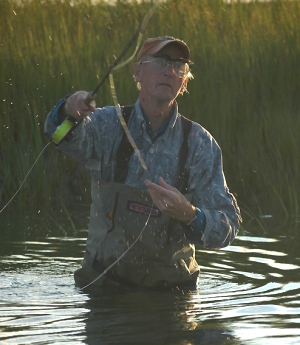
John Clarence "Jack" Gartside was an American fly tyer and fly fishing author.

Fly tying is the process of producing an artificial fly used by fly fishing anglers to catch fish. Fly tying is a manual process done by a single individual using hand tools and a variety of natural and manmade materials that are attached to a hook. Although the recent history of fly tying dates from the middle 1800s, fly tyers were engaged in tying flys since at least 200 AD.

Trout bum is an affectionate nickname for dedicated trout anglers, particularly those who practice fly fishing. Use of the term is similar in tone and meaning to the antiquated term, "Surf bum". The term was popularized by author John Gierach, whose early work, Trout Bum is an anthology of informal, narrative essays on flyfishing; and magazine articles he wrote before 1986.
Ontario OUT of DOORS (OOD) is a Canadian magazine focusing on recreational hunting, fishing and the outdoors in the province of Ontario. OOD is published 10 times per year and is owned by the Ontario Federation of Anglers and Hunters (OFAH).

Fly Tyer is an American magazine dedicated to the subject of fly tying, the art of tying materials to a hook for the purposes of fly fishing. Published four times a year, Fly Tyer is currently the largest fly-tying magazine in terms of circulation. It employs "perfect binding" instead of stapled pages, and usually features a close-up image of a fly on its cover.
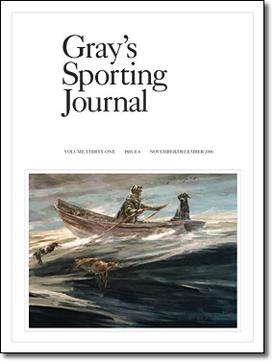
Gray's Sporting Journal is a magazine dedicated to the pursuit of outdoor recreation, with an emphasis on hunting and fishing. It is a consciously literary publication, using a "blind reader" to select articles, poems, and stories for publication. The blind reader receives only the text of the submitted work, not the name of the author, thus theoretically preventing publication of works based on fame only.
John Gierach is an American author and freelance writer who lives in Larimer County, Colorado. He was born in Illinois in 1946. Gierach graduated from Findlay College in Ohio with a degree in philosophy and a minor in English. In 1969, he moved to Colorado and began fishing nearly every day while working at a silver mine.
Bernard "Lefty" Kreh was an American fly fisherman, photographer and fly casting instructor who resided most recently in Hunt Valley, Maryland. Kreh is most known for being one of the pioneers of saltwater fly fishing and his book, Fly Fishing in Salt Water, is considered the seminal volume on the subject.
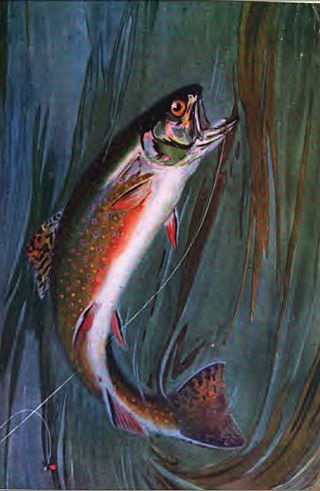
This annotated bibliography is intended to list both notable and not so notable works of English language, non-fiction and fiction related to the sport of fly fishing listed by year published. Although 100% of any book listed is not necessarily devoted to fly fishing, all these titles have significant fly fishing content. Included in this bibliography is a list of species related fly fishing literature.

This annotated bibliography is intended to list both notable and not so notable works of English language, non-fiction and fiction related to the sport of fly fishing listed by year published. Although 100% of any book listed is not necessarily devoted to fly fishing, all these titles have significant fly fishing content. Included in this bibliography is a list of fly tying, fly tackle, regional guides, memoirs, stories and fly fishing fiction related literature.
Gary LaFontaine was a well-known fly fisherman and author. His books include Caddisflies, The Dry Fly: New Angles, Fly Fishing the Mountain Lakes, and Trout Flies: Proven Patterns. He died of Lou Gehrig's disease.
The nice part about fishing all the time is that an angler can spare moments for just sitting and watching the water. These spells don't even have to have a purpose, but it is hard not to discover some secrets during such interludes. The fisherman without a schedule doesn't need to rush about, casting furiously in a hunt for every possible trout. For this reason, he usually catches more of them.
Fly Fishers International (FFI) is an international 501(c)(3) non-profit organization headquartered in Livingston, Montana. It was founded in 1964 and formalized a year later in 1965. FFI is an organized voice for fly fishers around the world; they represent all aspects of fly fishing, which include the art of fly tying, casting, and protection of the natural systems that support healthy fisheries and their habitats. Today, the organization's goals are to ensure the legacy of fly fishing worldwide. They focus on conservation, education and a sense of community.
Ron P. Swegman is an American angler, artist, and author. His work includes the illustrated essay collections Philadelphia on the Fly: Tales of an Urban Angler and Small Fry: The Lure of the Little. His writing primarily explores those times and places when and where nature and the city intersect.

Andrew "Drew" Chicone is an American author, saltwater fly designer, fly fisherman and fly casting instructor. He writes books and magazine articles demonstrating how to tie saltwater fly patterns, primarily focused on warm-water fish and fly fishing from standup paddleboards.

The Lefty's Deceiver is an artificial fly streamer pattern used in fly fishing for freshwater and saltwater species. The fly was originated by fly angler and author Lefty Kreh in the Chesapeake Bay for striped bass. The original fly was tied to resemble smelt, a common striped bass forage. The Deceiver is arguably the best known saltwater fly pattern in the world and in 1991 the U.S. Postal Service honored Kreh’s creation with a postage stamp.
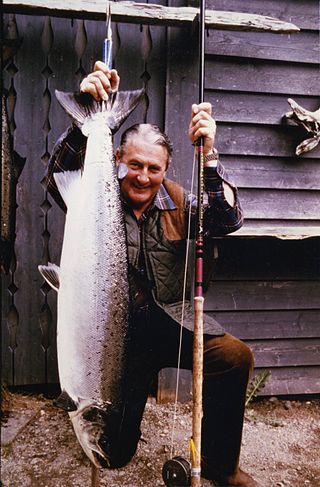
Arthur Victor Oglesby was a British writer, photographer, filmmaker, broadcaster and fisherman. He was best known for his books on salmon fishing.
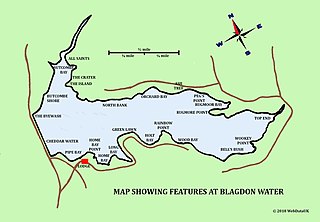
Howard A. Bell (1888–1974) of Wrington was one of the first anglers to adopt an imitative approach to fly fishing on reservoirs in the early twentieth century. At a time when employing flashy 'attractor' patterns was the norm he employed the alternative tactic of using artificial flies that represented the shape and form of the creatures present in Blagdon Water where he fished regularly.

A.K. Best is a production fly tyer, fly fisher, and angling writer. He was born in 1933 in Iowa and now lives in Colorado. He wrote for angling magazines like Fly Rod and Reel, Fly Fisherman, and Mid-Atlantic Fly Fishing Guide, and published several books on fly tying and fishing. His flies were sold in stores nationwide, as well as from online vendors. Best travels to speak about fly tying at angling clubs nationwide.














